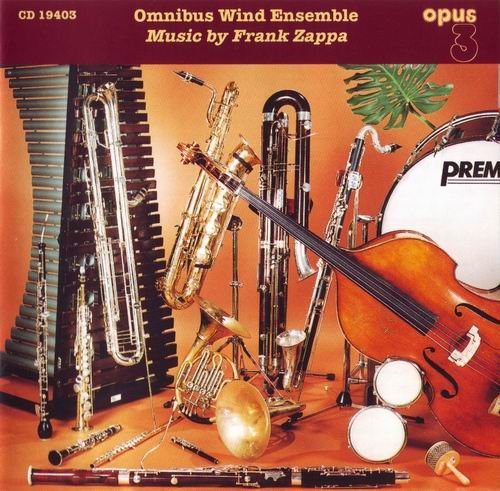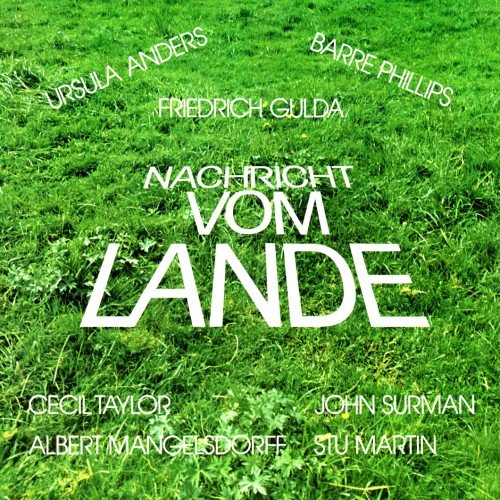Gabor Lesko - Earthway (The Album) (2021)
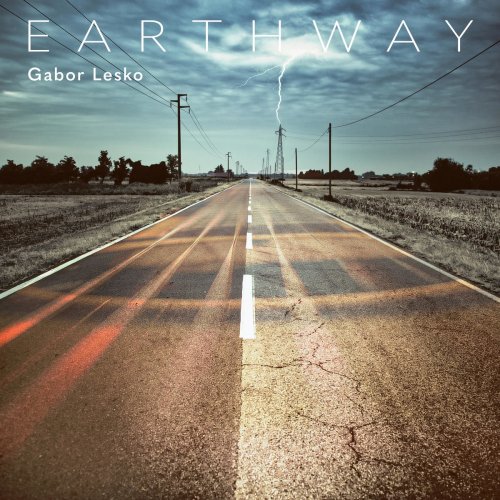
Artist: Gabor Lesko
Title: Earthway (The Album)
Year Of Release: 2021
Label: Creativity's Paradise Records
Genre: Jazz, Fusion
Quality: FLAC (tracks)
Total Time: 44:25 min
Total Size: 290 MB
WebSite: Album Preview
Tracklist:Title: Earthway (The Album)
Year Of Release: 2021
Label: Creativity's Paradise Records
Genre: Jazz, Fusion
Quality: FLAC (tracks)
Total Time: 44:25 min
Total Size: 290 MB
WebSite: Album Preview
01. Earthway (feat. Dave Weckl & Hadrien feraud)
02. Fiesta ! Bouncing Balls in The Galaxy (feat. Eric Marienthal & Hadrien Feraud)
03. Still Here For You (feat. Federico Malaman & Sophie Alloway)
04. Igor (feat. Gergő Borlai, Eric Marienthal & Jimmy Haslip)
05. Gently Obsessive (feat. Federico Malaman & Eugenio Mori)
06. Push it ! (feat. Hadrien Feraud & Sophie Alloway)
07. Mickey Mouse Loves jazz (feat. Gergő Borlai, Eric Marienthal & Federico malaman)
08. Air "The Lost key Part two" (feat. Gergő Borlai & Hadrien Feraud)
Gabor Lesko’s new album, Earthway, is a work that his established audience base and those less familiar with his work will find quite appealing. Audiences who are familiar with Lesko’s catalog will find the album (his eighth) so appealing because as with his existing catalog, the arrangements present so much diversity. Newer audiences will find it appealing for the exact same reason. From one song to the next, the 44-minute record presents audiences with something different. Case in point is the album’s closer, Air (Lost Key Part Two).’ The orchestration features some distinct prog style guitar work on the part of Lesko, as well some equally subtle but powerful ethereal strings alongside a gentle piano accompaniment. As the song progresses, (that word, “progresses)” it moves more into a Pat Metheny type stylistic approach and sound. That, against the more prog style first movement, makes the whole all the more engaging and entertaining. The prog influence here should come as no surprise, considering that Lesko has worked with two prog greats in the form of Tony Levin and Steve Vai. The return to the more prog sound in the song’s closing minutes gives the song a nice sense of completion in its clear ABA style composition.
On a different note, a song, such as ‘Fiesta’ is a stark contrast to the likes of ‘Air (Lost Key Part Two).’ The song’s title implies a Latin-tinged work, and it does open with a Latin flair. There is even a subtle flamenco style performance from Lesko at points throughout the song as well as some Samba from the horns. At the same time though, the arrangement also features a touch of easy-listening style jazz for good measure. The two styles of jazz could not be more distinct from one another. Yet somehow, Lesko and his fellow musicians manage here to make the two polar opposites work so well together. There is even a sort of 80s style sound added to the mix through Lesko’s rock style guitar work, the piano and saxophone line to make things even more interesting. The whole is completely unlike the arrangement featured in the previously examined song. That is a good thing, too. Between the noted performance, those of the drums and bass, the whole of the composition ensures listeners’ engagement and entertainment in its own unique fashion. As an aside, credit would be given where due here (multiple musicians handled bass and drum duties in this record), but this album did not include liner notes. That is not the say that the album does not have liner notes, but that the copy received by this critic may be strictly a media copy lacking those notes. Getting back on the subject at hand, this arrangement is just one more way in which the arrangements here prove so important to this album’s presentation.
‘Gently Obsessive’ is one more way in which the diversity in Earthway’s musical arrangements proves important. This song’s arrangement is just as starkly unlike the album’s other works as they are from one another and the rest of the album’s works. The gentle, flowing subtlety in Lesko’s guitar work here creates such a mellow vibe alongside the equally gentle piano line and strings makes the song even richer. As with the album’s other songs, the arrangement here is also enjoyable because of the gradual growth exhibited throughout the course of the song’s four-minute, 33-second run time). That gradual growth is so subtle that when it is considered with the performances themselves therein, the whole gives the song even more to enjoy. When the song is considered along with the other arrangements noted here and the rest of the album’s works, that collective forms such a strong foundation for Earthway.
For all that the arrangements do for the overall presentation of Earthway, they are just a portion of what makes the album so appealing. The songs’ sequencing adds its own layer of enjoyment to the album. As has already been noted, the album’s arrangements vary stylistically and sound-wise from one to the next and even within themselves. That was taken fully into account in considering the album’s sequencing. A close listen to the album reveals a clear back and forth of the record’s energies throughout, again from one song to the next and within. The album opens with two songs that themselves open upbeat, but of course do evolve as they progress. The next trio of songs is more laid back, at least in their opening segments. Things pick back up in ‘Push It!’ before relaxing again in the album’s final two songs. Again that is at least in the opening portions of the songs. Overall, the album’s sequencing shows great time and thought went into this part of the album’s presentation. It is still not the last of the album’s most important elements. The record’s production rounds out those elements.
The production that went into Earthway is important to examine because again, as noted, there is so much going on in each song. The arrangements progress within themselves. There are a lot of musicians performing a lot of parts in each song, too. That means that lots of attention had to be paid to each composition in even its most minute detail. From dynamics, to the offset of one instrument’s line to another, and even the addition of extra effects to highlight given lines, those behind the boards had a lot to work with. The result of the painstaking attention to detail in each song is that the album proves appealing as much for its varied content as for the general effect of each song. Keeping this in mind along with the importance of the album’s sequencing, all things combined make Earthway a work that will appeal widely among audiences.
Gabor Lesko’s latest album, Earthway is a strong new offering from the veteran, multi-talented musician. It is a presentation that will appeal widely among audiences. That is due in part to its featured arrangements. The arrangements in question are so diverse in their sounds and stylistic approaches. There is jazz influence presented alongside some rock sensibilities, and more from one song to the next. The sequencing of that diverse content makes for even more engagement and appeal. That is because it serves to make sure the album did not get stale from one song to the next. The record’s production puts the finishing touch to its presentation. That is because the production ensures all of the right accents, dynamics, and other elements got all of the right attention at each point throughout the album. Each item noted here is key in its own way to the whole of this album. All things considered, they make the album one of the year’s best new jazz album and overall albums.
On a different note, a song, such as ‘Fiesta’ is a stark contrast to the likes of ‘Air (Lost Key Part Two).’ The song’s title implies a Latin-tinged work, and it does open with a Latin flair. There is even a subtle flamenco style performance from Lesko at points throughout the song as well as some Samba from the horns. At the same time though, the arrangement also features a touch of easy-listening style jazz for good measure. The two styles of jazz could not be more distinct from one another. Yet somehow, Lesko and his fellow musicians manage here to make the two polar opposites work so well together. There is even a sort of 80s style sound added to the mix through Lesko’s rock style guitar work, the piano and saxophone line to make things even more interesting. The whole is completely unlike the arrangement featured in the previously examined song. That is a good thing, too. Between the noted performance, those of the drums and bass, the whole of the composition ensures listeners’ engagement and entertainment in its own unique fashion. As an aside, credit would be given where due here (multiple musicians handled bass and drum duties in this record), but this album did not include liner notes. That is not the say that the album does not have liner notes, but that the copy received by this critic may be strictly a media copy lacking those notes. Getting back on the subject at hand, this arrangement is just one more way in which the arrangements here prove so important to this album’s presentation.
‘Gently Obsessive’ is one more way in which the diversity in Earthway’s musical arrangements proves important. This song’s arrangement is just as starkly unlike the album’s other works as they are from one another and the rest of the album’s works. The gentle, flowing subtlety in Lesko’s guitar work here creates such a mellow vibe alongside the equally gentle piano line and strings makes the song even richer. As with the album’s other songs, the arrangement here is also enjoyable because of the gradual growth exhibited throughout the course of the song’s four-minute, 33-second run time). That gradual growth is so subtle that when it is considered with the performances themselves therein, the whole gives the song even more to enjoy. When the song is considered along with the other arrangements noted here and the rest of the album’s works, that collective forms such a strong foundation for Earthway.
For all that the arrangements do for the overall presentation of Earthway, they are just a portion of what makes the album so appealing. The songs’ sequencing adds its own layer of enjoyment to the album. As has already been noted, the album’s arrangements vary stylistically and sound-wise from one to the next and even within themselves. That was taken fully into account in considering the album’s sequencing. A close listen to the album reveals a clear back and forth of the record’s energies throughout, again from one song to the next and within. The album opens with two songs that themselves open upbeat, but of course do evolve as they progress. The next trio of songs is more laid back, at least in their opening segments. Things pick back up in ‘Push It!’ before relaxing again in the album’s final two songs. Again that is at least in the opening portions of the songs. Overall, the album’s sequencing shows great time and thought went into this part of the album’s presentation. It is still not the last of the album’s most important elements. The record’s production rounds out those elements.
The production that went into Earthway is important to examine because again, as noted, there is so much going on in each song. The arrangements progress within themselves. There are a lot of musicians performing a lot of parts in each song, too. That means that lots of attention had to be paid to each composition in even its most minute detail. From dynamics, to the offset of one instrument’s line to another, and even the addition of extra effects to highlight given lines, those behind the boards had a lot to work with. The result of the painstaking attention to detail in each song is that the album proves appealing as much for its varied content as for the general effect of each song. Keeping this in mind along with the importance of the album’s sequencing, all things combined make Earthway a work that will appeal widely among audiences.
Gabor Lesko’s latest album, Earthway is a strong new offering from the veteran, multi-talented musician. It is a presentation that will appeal widely among audiences. That is due in part to its featured arrangements. The arrangements in question are so diverse in their sounds and stylistic approaches. There is jazz influence presented alongside some rock sensibilities, and more from one song to the next. The sequencing of that diverse content makes for even more engagement and appeal. That is because it serves to make sure the album did not get stale from one song to the next. The record’s production puts the finishing touch to its presentation. That is because the production ensures all of the right accents, dynamics, and other elements got all of the right attention at each point throughout the album. Each item noted here is key in its own way to the whole of this album. All things considered, they make the album one of the year’s best new jazz album and overall albums.
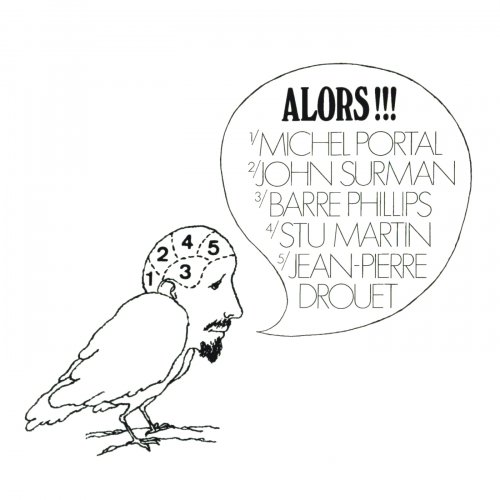
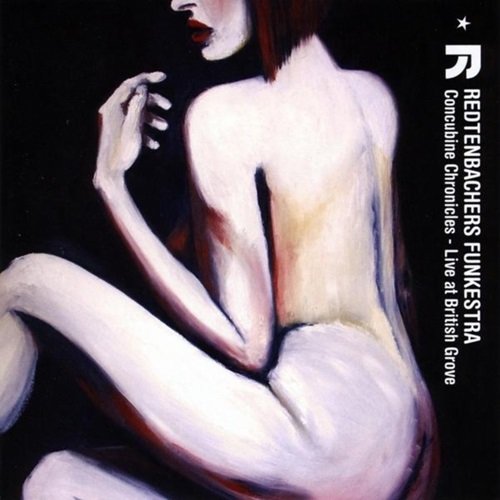
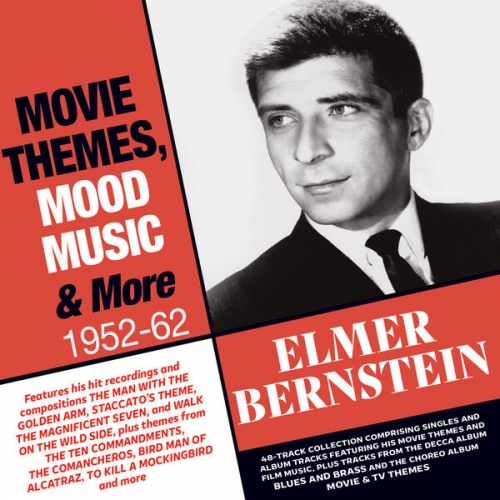
![Eck Adahg Jeff Armstrong & Ra Kalam Bob Moses - Freedom is Now (2026) [Hi-Res] Eck Adahg Jeff Armstrong & Ra Kalam Bob Moses - Freedom is Now (2026) [Hi-Res]](https://www.dibpic.com/uploads/posts/2026-01/1767358838_qkuy7nuk29ov3_600.jpg)


![PEAKS, Florian Marques - Invitation(s) (2025) [Hi-Res] PEAKS, Florian Marques - Invitation(s) (2025) [Hi-Res]](https://www.dibpic.com/uploads/posts/2026-01/1767415608_cover.jpg)
